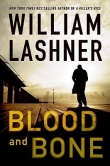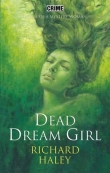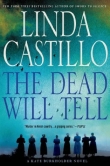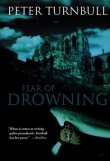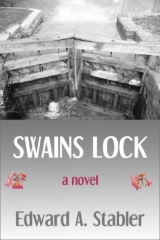
Текст книги "Swains Lock"
Автор книги: Edward A. Stabler
Жанры:
Триллеры
,сообщить о нарушении
Текущая страница: 8 (всего у книги 25 страниц)
Chapter 10
High-Water Marks
Sunday, January 21, 1996
Driving the downslope toward the American Legion Bridge over the Potomac, Kelsey saw the river emerge through the trees to her right. The silt-stained current rolled and twisted through bare trees that normally stood a hundred feet from the water’s edge. Looking upstream from the bridge, she saw a writhing brown body below the orange sun; it seemed as if the river had risen halfway toward the level of her eyes. And in rising, like a cobra, it had grown half again as wide.
The highway ascended into Virginia and she turned onto a serpentine road that ran through woods and pastures, tracking the river upstream. After a few miles she reached the entrance road to Great Falls Virginia National Park. A police car was parked across the road, its lights flashing. Kelsey slowed to turn and the officer waved her onward, instructing her to bypass the park. She reversed course in a driveway and drove back past the entrance, then retraced another half-mile to the dirt lot for the Difficult Run trailhead. Since it was 5:10 pm on a winter Sunday, she wasn’t surprised to see the lot almost empty. Difficult Run was a Potomac tributary that drained a local watershed and formed the southeast border of sprawling Great Falls Park. A muddy path from the parking area followed the stream toward its confluence with the Potomac, then joined trails leading west, back into the heart of the park.
She parked in the lot and got out, and with daylight fading climbed directly into the woods beside the road. A shallow draw led up the hillside and she found a deer path within it. She followed the path to the crest of the drainage where it met a legitimate trail, then turned west through the trees and jogged along the top of the ridge.
The thaw had begun on Thursday with heavy rain and temperatures in the low 60s. The last three days had been unseasonably warm and all that was left of the Blizzard of ’96 were dirty pyramids of snow in the corners of parking lots and patches of melting snow in the woods. The residual snow along the ridge-top reflected twilight and made the trail easy to follow. When it dead-ended at the entrance road to the park, she stood in the shadows and looked up the road to her left. The police car she’d seen earlier was two hundred yards away, still guarding the entrance, lights flashing. To her right the road descended through dark woods toward the guard kiosk, just under a mile away. She turned downhill and set off at a light run.
The air was still warm, so she shed her fleece pullover and wrapped it around her waist. The shuttered guard kiosk appeared through the gloaming; she passed it and cut onto the grassy picnic area between the road and the cliffs. She continued toward one of the viewing platforms that sat astride the rocks, overlooking the river below and the Falls a quarter-mile upstream.
But through the ebbing light she could see that the cliffs were gone. Instead the edge of the river undulated over the cement floor of the platform and encroached a few feet further into the park. Where it was compressed into the gorge below Great Falls, the river had risen seventy feet. She proceeded toward the water’s edge, passing a wooden post that denoted the high-water marks of past floods. At the level of her knees, a small sign read “1985.” At chest-height another read “1937.” Nearly six feet up the post, “1972.” Ten feet up, “1942.” The highest sign read “1936.” No earlier floods were chronicled.
Right now the water was lapping at the path just ahead, but the picnic areas behind her were swampy and studded with pools of standing water. She knew that the crest of the flood had passed Great Falls before noon, and that the river must have left flood stains on the post once more.
She peered out at the river. The nearest fifty feet of water lay within a lazy eddy defined by a submerged promontory of the cliffs upstream. Little ripples flowing in from the main current traversed the eddy and collided with their mirror images reflecting from the shore. Out beyond the eddy line, the current was a traveling, caramel-colored vortex laced with deep ephemeral folds and whirlpools. And at its center the river raged as a series of exploding brown waves and haystacks, spewing whitewater twenty feet in the air.
Kelsey saw that the Falls were gone, buried entirely beneath the surface of the river. A severed tree trunk shot out where the base of the Falls had been, then collapsed into the water and vanished. A half-minute later its torn roots emerged to spin inside a transient whirlpool, a long swim downriver from where it had disappeared. The bright and steady background roar of the Falls at normal water levels was missing too, and she found its absence unnerving. In its place the flood had brought a deep rumbling sound, punctuated by erratic booming and popping noises emanating from the center of the river.
A small snapped tree flowed past and she realized that it might have been swept from the distant western edge of the watershed. The sudden thaw throughout the mid-Atlantic had funneled blizzard runoff from four states into the torrent she confronted now. Or maybe the tree was a local casualty, she thought, and had only been in the river a day, drifting down from somewhere like Whites Ferry. She turned toward the high-water post and sought out the sign at its midpoint. 1972. She absently traced the faded scar on her temple with her fingers.
Des, where are you? Did you drift this far from Whites Ferry in the days they searched for you before the flood? Are you here now? Staring at the post, she felt a chill breeze caress her shoulders. Final colors were draining from the sky. Shivering, she untied the pullover from her waist and put it on. When her eyes opened, they found the knee-level sign that read “1985”. Early November, she thought, crossing her arms and squeezing her sides for warmth. I was here then too, and saw nothing, learned nothing. But something seems different this time. Why? she asked herself, turning back toward the wild and kicking flow.
This time I feel your presence. Maybe your bones have been here all along, in an ageless chamber under the Falls. Or maybe you’re still with us. Do you miss your boyfriend, Des? Poor Miles who never had a chance… never saw the Stones. And something else is different. I’ve seen your sign, the mason’s mark. Twice now. And I met the person who found the second one. Vincent Emory Illick, born October 22, 1960. I know that much, Des. And this: he also found an old photo, and a note that may bring me what I’ve been looking for. I need your help to resolve it. What to make of Vin Illick? And what to make of his fiancée?
She unzipped her pocket and pulled out an empty plastic bottle, tilting it skyward so the label caught light. “Gentamicin. Dr. Nicky Hayes, DVM.” Twisting off the cap, she knelt down at the water’s edge. Ripples broke against the gravel of the path and tiny counter-waves reflected back across the eddy. She held the bottle’s mouth underwater long enough to fill it halfway before screwing the cap back on. She stood up, set herself, and threw the bottle hard toward the current. It landed just inside the eddy line, drifted slowly out and downstream, then caught an eddy current and bobbed back upstream and shoreward. She waited while it flirted with the threshold. Which way is this going, Des? A harmless reflecting wave pushed the bottle past the eddy line and it vanished in the maw of the flood.
Chapter 11
White Mules
Monday, March 11, 1996
Kelsey excused herself from a conversation with a customer who was reviewing the hanging photos in her studio. She retreated through the archway to the office area, where she cleared papers from the circular table and deposited them on her desk. Vin Illick and Nicky Hayes were due to visit at 11:00 and it was 10:45 now. She pulled two thick albums from a bookshelf and placed them on the table.
From under the desk she withdrew a framed photograph. On the wall to the right of the archway, a photo of a blossoming cherry tree hung at eye level. She took it down and hung the picture from beneath her desk in its place, then studied the new image. Would it be enough? It had been almost ten weeks since she’d seen the tracks around the sycamores at Carderock. They hadn’t come from the parking lot nearby, but from the Billy Goat Trail below. And the snow had been cleared from every inch of the railing-boards. It must have been Vin – she hadn’t mentioned the spot to anyone else. Bryce might have heard her statement at the party but wouldn’t have understood the allusion. The clue led nowhere, but she’d needed to know whether the hook had been set. Ten weeks ago it apparently had been. Was it still? She hoped so, since she couldn’t find the truth without him.
***
Vin parked near the narrow storefront of the Thomas, Ainge Photography Studio. It was Monday, so the lot at the Potomac mall was only half full. Falling in step beside Nicky, he felt the reassuring sun of imminent spring. Daffodil shoots were peeking from the planter boxes fringing the lot and the pungent smell of mulch suffused the air.
A meeting with a wedding photographer and a chance to size up Kelsey Ainge – two birds with one stone, he thought. Three weeks ago they’d finally settled on October 19 as the wedding date. That would give Nicky’s parents a week at home after they returned from two months in Tokyo. The outdoor venue they wanted was available, so they had written a check for the downpayment. Next they’d found an officiant who was comfortable with the service they were planning.
And now they needed to pick a photographer. They’d already met Joel Bettancourt and liked his wedding portfolio, but Kelsey Ainge had good client references and Nicky agreed they should see her work as well. Vin still had the business card she’d given him at their house last fall. And now he saw its puzzling tagline printed in green on the studio door: Today Made Timeless. He followed Nicky in.
An entryway table held business cards and a vase filled with spring hyacinths. The front half of the studio was configured as a gallery, with framed photos hung on a central partition and the windowless walls. Track lights illuminated the artwork.
He couldn’t see anyone in the gallery, but there was an archway at the far end and a back room behind it. Nicky sidestepped along the partition, pausing to study each image. Vin walked down to the arch. The back room was an office and Kelsey was standing next to a desk in the corner, wearing a cardigan sweater and listening to a prototypical Potomac matron: 50-something, bouffant hair, knee-length leather boots, garish rings.
Kelsey made eye contact and held up a finger for Vin to indicate she’d be finished soon. He rejoined Nicky, who was examining a photo of a bride and groom feeding each other cake, arms entwined. It was shot from an intermediate angle in black and white.
“I like the perspective of this shot,” Nicky said. “And the fact that it’s black and white. It makes it look…” She hesitated for a second.
“Timeless?” Vin offered.
“I don’t know. Maybe ‘classic’ is a better word.”
He nodded and put his arm around her waist. Her hair smelled like lilacs. They edged down the partition, studying the wedding photos. Vin was glad that their own plans were finally taking shape. And the process of nailing things down seemed to have lifted Nicky’s spirit over the last six weeks. The days following their ill-starred snowshoeing trip had been dismal. She had seemed distant and depressed, almost inscrutable for a while, and he had grudgingly buried himself in the Rottweiler project. At least he’d managed to get the company to sign off on phase one and accept the invoice he’d sent. And then both he and Nicky had come up for air at the same time. After all the snow disappeared in late January. After the ensuing flood.
It was his idea to fly to Arizona in mid-February for a week with her parents. They’d been able to hike every day in desert sunshine, and Vin had watched Nicky transform back into the person he’d spent six weeks with in the Rockies last summer. The woman he’d fallen in love with the previous autumn in Boston. Spending time with Nicky’s parents, they’d been able to work through the logistical issues and agree on an October wedding date.
The wheels had kept turning after they flew home from Arizona. This morning they had dropped off their “save the date” card design at the print shop. The invitation list was mostly done, so they could probably get the cards mailed within the next week or so. At that point there would be no turning back.
And while his career planning wasn’t quite on the same trajectory, he knew that Nicky had grown more comfortable with his consulting situation. Rottweiler had paid him for phase one and he’d recently submitted a proposal for phase two. Phase three would probably last into the fall, so it didn’t make sense to look for a job until after the wedding. The truth was that he’d become attached to the flexibility of working at home; it allowed him to go for a bike ride on a short winter day or take Randy for a run on the towpath before it got dark. Or spend a few hours at the library, though he hadn’t done that recently. That might be another reason Nicky seemed more relaxed. She thought his “treasure hunt” – his fascination with Lee Fisher’s note and the 1924 event at Swains Lock – was ebbing or over.
On the surface it appeared she was right, but deep down Vin wasn’t sure. He knew that the words in Lee’s note had infected him, and that though the virus might be in remission, it wasn’t entirely gone. Joined sycamores, Lee Fisher, K. Elgin, Emmert Reed’s albino mule… the money, the killers, the dead. His interest had waned because he’d run out of ideas and into dead ends. And it was harder now for him to fish the note for insight because a question had been lobbed into the limpid waters of the pool, creating waves that made submerged objects harder to see. “Why are you here?” It was as if the question was a clue itself, arrayed alongside the others.
“Good white mules are really hard to find.” Vin was startled from his reverie. Kelsey had approached so quietly that he hadn’t noticed her. She was looking over their shoulders at a color shot of a bride’s silk hemline, with tanned legs and pedicured feet extending from a white folding chair into lush grass. The bride wore white, backless shoes with open toes and crossing straps. One foot was halfway out of its shoe and the shoe had capsized in the grass.
“I’m sure they are,” Nicky said. “Those are gorgeous, but we’re getting married in October, so I don’t they would work for me.”
“A little too summery,” Kelsey agreed. She led them back through the archway to the office area and offered seats at the circular table. Vin put his folded sunglasses on the tabletop while Nicky asked if Kelsey was available on October 19. Kelsey said she was, then asked standard questions about the wedding size, venue, and time of day.
Vin surveyed the room as Nicky answered. There were L-shaped desks on each side, with their vertices in the back corners. Landscape photos and nature shots hung on all the walls, and waist-high bookcases girded the front half of the room. In response to something Nicky had said, Kelsey walked over to a bookcase, pulled out an album, and brought it to the table.
“I loved this wedding,” she said, “and what you’re describing reminds me of it.” She oriented the album and Nicky studied the photos on the first page.
“The stone house is beautiful.”
“It was at an old estate that had been converted into a vineyard. The reception was in a barn the owners had turned into a tasting room, and there was a huge patio with a view down the hillside and out over the vines.”
Nicky rotated the album to give Vin a better viewing angle. When they’d finished reviewing it, Kelsey slid a glossy data sheet across the table that laid out the parameters of her wedding packages. As Nicky read them and Vin scanned sideways, Kelsey rose to answer the phone. Vin watched her glide to her desk. Very cat-like.
He stood up and was drawn to a photo on the far wall of a great blue heron standing in a shallow bog. “Heron – Dierssen Waterfowl Sanctuary” was written in pencil under the print. A nearby color shot showed a seven-arch stone bridge spanning a tranquil body of water, the late-afternoon sun imparting a pinkish hue to the stones. It was titled “Monocacy Aqueduct – Chesapeake and Ohio Canal.”
“Pretty, isn’t it?” Nicky had joined him. “Do you think we should get a quote?”
“Sure – knowledge saves.” They turned as Kelsey approached, apologizing for the interruption. Nicky said they’d like an estimate based on her standard package, so Kelsey took down their mailing address.
“It sounds like you have a vision for the event,” she said, “which I always hope for when I talk to couples about a wedding. It’s important to know what you want,” she added, turning toward Vin, “and to know why you’re here.”
He smiled tightly, canine teeth pressed to his lower lip, and glanced over her shoulder at his sunglasses lying on the table.
“Thanks for your time,” Nicky said.
“I enjoyed it,” Kelsey said. “I’ll be in touch.”
Vin followed Nicky back to the archway, then stepped sideways to examine the picture hanging beside it. It was a close-up of a sunlit stone block in a scarred old wall. The block’s gray face was stained with patches of white and pale-green lichen, and the branching shadow of a sapling curved across an upper corner. Its right side helped form the edge of the wall. Carved into the block was a symbol he had seen before.

He felt suddenly lightheaded as he remembered where. In the old shed, on the plank that had guarded the drill, the photo, and Lee Fisher’s note. He leaned closer to read the penciled words below the image. “Mason’s Mark – Bear Island”. He shot a quick glance back toward Kelsey but she was on the phone again, staring down at her desk. He plunged through the archway to catch up with Nicky.
She was reviewing the photos on the other side of the partition. On the way to the car, they compared what Kelsey had shown them with what they’d seen from Joel Bettancourt. Vin was neutral and Nicky liked Kelsey’s work a little better, so price might be the deciding factor. As he was backing out of their parking spot, Vin braked and looked at Nicky.
“I forgot my sunglasses. I must have left them in her office.”
Nicky sighed disapprovingly. “At least you realized it before we got home.”
He double-parked and hopped out, leaving the engine running, and jogged to the studio door. When he reached the archway, Kelsey was off the phone. She looked up from her desk as he entered. “I thought you might be back.”
“I forgot my sunglasses,” he said with a smile that vanished instantly. He retrieved them and circled toward her desk, squinting at her in silence for a second. “And I forgot to tell you something.”
She raised her eyebrows inquisitively.
“Be careful on the Billy Goat Trail below Carderock. There’s a bridge out.”
“I’d heard about that.”
“And the warning sign is poorly placed.”
Her gray-green eyes flitted left and right, steadied.
He gestured to the photo beside the archway. “That’s an interesting picture,” he said tersely. “A mason’s mark?”
She nodded. “That’s what a park ranger called it when I showed it to him.”
“It reminds me of a symbol a friend of mine showed me once. Maybe you know him. Lee Fisher.” She gave a thoughtful look and shook her head. He searched for a hint of uncertainty or guilt but couldn’t find one. “One more question,” he said. “Is there something you want from me?”
She stood up and leaned her thigh against the top of her desk, regarding him calmly. “I want you to find what you’re looking for.”
“That’s funny. I was starting to get the opposite impression.”
He turned to leave but pivoted in the archway. “I just thought of something my friend Lee once said: ‘be careful you don’t share my fate.’ You might run into those words in a library book sometime.”
“That’s good advice,” she said with a smile that reinforced his suspicions. “I’ll keep it in mind.”
